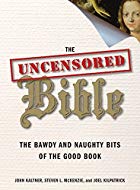
Mantra #1 (from 17+ mantras of biblical scholarship)
Any narrative which purports, on the face of it, to be telling about events that actually happened deserves to be treated as true unless it can be demonstrated not to be.
Rational alternative
Withhold judgement about the truth of any narrative until one has evidence to decide either way.
Discussion
This reminds me of Dieter Georgi’s observation that I noted in How Jesus has been re-imaged:
The reversal of the principle of burden of proof in favor of those who claimed authenticity of material that was obviously and thoroughly shaped by faith in the continued presence of Jesus after his death did not happen by way of methodological argument but by way of decree.
It is not a sin to say “I don’t know” pending evidence that allows one to decide either way. I suspect that biblical scholars who mouth this mantra are really only interested in applying it to the certain selected biblical literature. Continue reading “The pseudo-scholarly “hermeneutics of charity””

